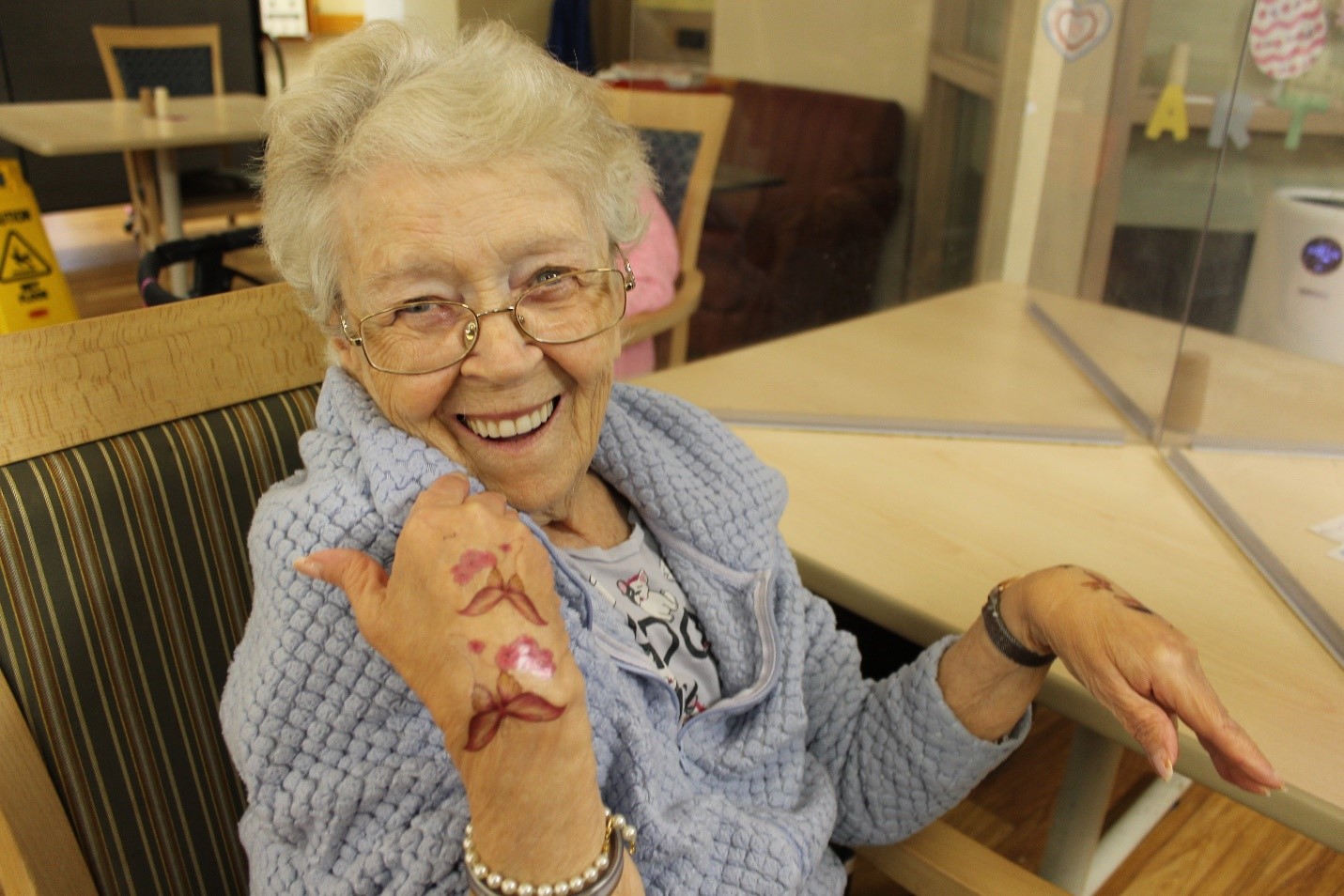
Nora, a PSW, and Lionel, a resident in one of the many rooms with tranquil murals – photo is courtesy of the Glebe Centre
On February 22nd, 2023, Susan Zorz, Executive Director (Acting) of the Glebe Centre, a long term care home in Ottawa, gave an informative and animated presentation on how the Centre transformed its Bankwood Unit from ‘institution to home’ with the implementation of the butterfly model of care. The journey was longer than anticipated as Covid created a bit of havoc with their schedule but the Centre was steadfast in its determination to complete the process and attained its ‘butterfly’ accreditation status in November 2022. The Centre is strategically planning to bring this approach to its other units.
As Susan noted in her presentation about the cultural transformation, “The introduction of the Butterfly Model of Care requires changes in staff roles, training, day-today operations as well as to the physical design of the home…..”
Some key outcomes and improvements include decreasing use of psychotropic/sedative medications; reaching people’s emotional reactions and distress responses; people living with increased well-being; meaningful engagement; fewer falls through greater independence; and reduced staff turnover – less absenteeism.
To view this exciting presentation and learn more, please click here .
Ontario needs more homes where residents thrive in a place that looks and feels like home, not an institution.
Please help make this transformation a reality by forwarding this post to your contacts or by sharing on your Facebook, Twitter or Instagram accounts; or with your municipal or provincial representatives; or with your local community papers or other media contacts who might help promote this cause!










